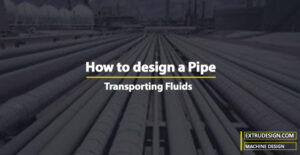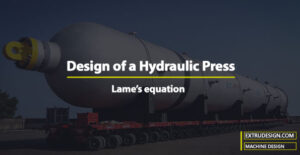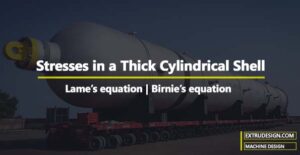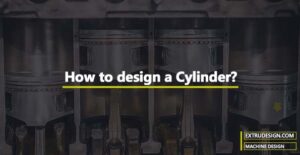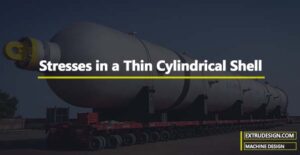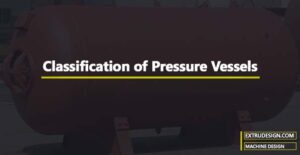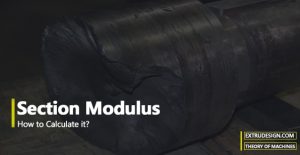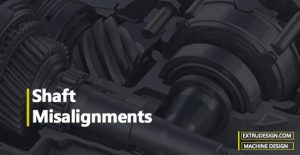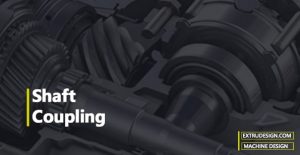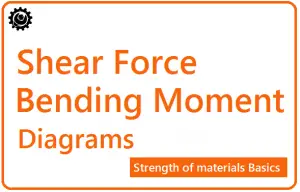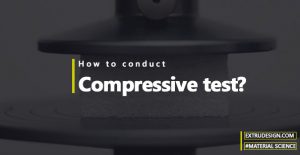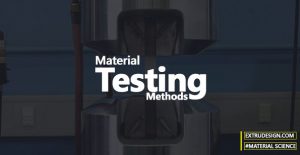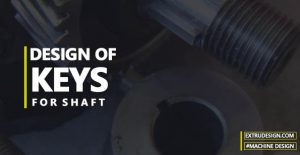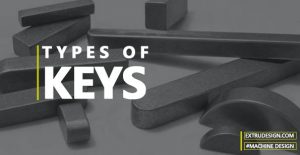Pipes are used to transporting the fluids such as water, steam, gases, oil and chemicals. So these pipes may undergo internal pressure for some applications and for some not. Many of us wondered about the pipes that we see to transport the fluids that are going to withstand the pressure exerted by the fluid or […]

In Mechanical Engineering, Machine Design is subjected to creating new or Advanced machines. This involves improving the existing machines to better machines.
The design process is a time-consuming process which includes implementing an Idea and considering the commercial and economic aspects, Making the idea into a shape in the form of drawings by keeping the available resources in mind to make the actual Idea into a life.
How to design a Hydraulic Press?
Have you ever wondered how to design a Hydraulic Press?? We use Hydraulic Press for many applications from a manufacturing point of view to compacting. In this article, we will understand how to design a hydraulic press by finding out the necessary parameter such as the diameter of the ram, vertical columns, and Hydraulic cylinder […]
Stresses in Thick Cylindrical Shell
We have already discussed the different types of pressure vessels previously. The thick cylinder is one of the types of Cylindrical shells which is subjected to very high internal pressures for many applications such as Gun Barrels, Hydraulic cylinders, and pipes. In these applications, the wall thickness must be made thick to accommodate the high […]
How to design a Cylinder?
Have you ever wondered how to design a Cylinder?? I mean how the basic parameters such as diameter and thickness are set. We mostly see Cylinders in Internal combustion Engines, Compressors, and Hydraulic pumps. In all these cases the Cylinder will experience internal pressure caused by combustion in engines, air compressed by the piston in […]
Stresses in a Thin Cylindrical Shell
You must have seen heavy vehicles transporting fluids such as water/petroleum or steam boilers in some industrial plants etc. with a cylindrical structure called tanks or Pressure vessels. These Pressure vessels are used to store the fluids under the pressure. Since these fluids are stored under pressure, these may undergo a state of change inside […]
Classification of Pressure Vessels
You must have seen heavy vehicles transporting fluids such as water/petroleum or steam boilers in some industrial plants etc. with a cylindrical structure called tanks or Pressure vessels. These Pressure vessels are used to store the fluids under the pressure. Since these fluids are stored under pressure, these may undergo a state of change inside […]
What is Section Modulus?
Section Modulus is also referred to as the Polar Modulus or the Torsional Sectional Modulus. It is denoted by Zp. Along with these, there are two more definitions also there to discuss. So let’s discuss this topic in more detail. (FYI: We discuss this topic more in terms of circular shafts, If you are looking […]
What is a shafts misalignment? |Causes|Effects|
When two equipment (Driver and driven) need to coupled together, then they need to be aligned properly to couple together. Installing the two equipment with 100% alignments is not possible. These misalignments can be accommodated by the special member called coupling. There are two different types of couplings. Flexible couplings and rigid couplings. These coupling […]
What are the different Flexible Coupling types?
A shaft coupling is a mechanical element that connects the two shafts together to transmit the torque from one end to the other by accommodating the misalignment. In the previous article, we have discussed the Functional requirement of coupling, coupling classification, and Rigid Coupling types. In this article, we are going to discuss the different Flexible […]
What is Shaft coupling? Different types of Coupling?
A shaft coupling is a mechanical element that connects the two shafts together to transmit the torque from one end to the other by accommodating the misalignment. Usually of a shaft can be made up of limited lengths so we have to make a couple multiple pieces of shafts to achieve the larger lengths to […]
How Vicker’s Hardness Test is conducted?
The ability of a material to resist indentation or penetration is called Hardness. To test the hardness of any material is simply forcing an indentor into the surface of the metal by applying the load. There are different methods are developed to test this hardness. In the previous article we have discussed The Brinell Hardness test, the Rockwell Hardness […]
How Rockwell Hardness Test is conducted?
The ability of a material to resist indentation or penetration is called Hardness. To test the hardness of any material is simply forcing an indentor into the surface of the metal by applying the load. There are different methods are developed to test this hardness. In the previous article we have discussed The Brinell Hardness test, this article, […]
How Brinell Hardness Test is conducted?
The ability of a material to resist indentation or penetration is called Hardness. To test the hardness of any material is simply forcing an indentor into the surface of the metal by applying the load. There are different methods are developed to test this hardness. In this article, we are going to discuss one of the […]
What are the Non-Destructive testing methods?
The components that we design and engineering should satisfy the service and the requirement. For that, engineers make sure that the finished product should be tested before it is going to be installed and start functioning. Engineers employed few testing methods both destructive and the non-destructive tests of the materials. Let’s discuss what are the […]
Shear Force and bending moment diagram for Simply supported Beam
In the previous Article, we have discussed the Shear Force and bending moment diagram for Cantilever Beam. In this article, we are going to discuss the Shear Force and bending moment diagram for Simply Supported Beam. Shear force and Bending moment diagram in beams can be useful to determine the maximum absolute value of the shear force and […]
How Compression Test is conducted?
In the previous tutorial, we have discussed the list of Material Testing Methods, and how to conduct the Tensile test, in this tutorial we are going to discuss how to conduct the Compression test. Compression Test The Compression test is also similar to the tensile test, the way we conduct it on the UTM. It also comes under the destructive […]
How Tensile Test is conducted?
In the previous tutorial, we have discussed the list of Material Testing Methods, in this tutorial we are going to discuss how to conduct the tensile test. Tensile Test The tensile test comes under the destructive test where we apply the gradually increased load up to the material to get a fracture. So a tensile test is […]
What are the different Material Testing Methods? (Testing of Materials)
The components that we design and engineering should satisfy the service and the requirement. For that, engineers make sure that each type of material should be tested before we used for the making of the components. Along with the strength, there are other properties are also needs to test such as hardness, toughness, brittleness, etc. […]
Design of Key for shaft in Machine Design
In the Previous article, we have discussed different types of keys for shafts, Now we are going to discuss what are the different types of forces acting on Key, and the design of Key for the shaft. Different forces acting on the Keys First of all, we have to know what are the different types of […]
What are the different types of Keys in machine design?
In mechanical engineering, Key is a part of a machine or equipment where it is used to connect the rotating machine element to the shaft and enables the torque transmission. In this article, we are going to discuss what are the different types of Keys in machine design. What is a Key? As we said above […]
- « Previous Page
- 1
- …
- 5
- 6
- 7
- 8
- 9
- …
- 11
- Next Page »
